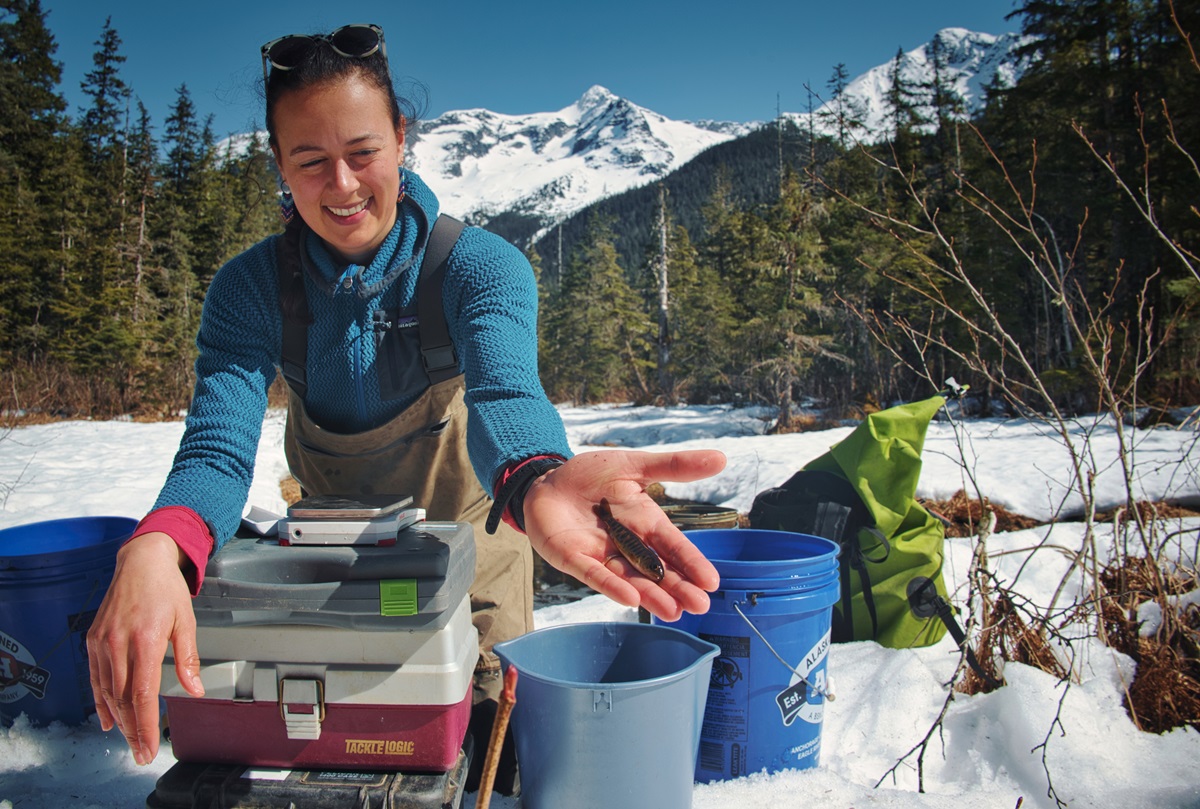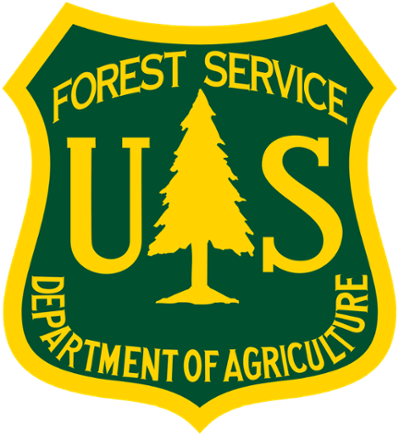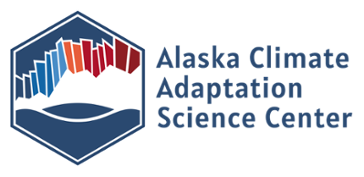Aquatic Food Webs and Salmon Growth

Aquatic food webs and salmon growth in Southeast Alaska
ACRC scientists are exploring how the diversity of water sources in Southeast Alaskan watersheds influences aquatic food webs that sustain salmon growth. This research helps inform freshwater fisheries management and food security in rural and coastal communities in the face of climate change.
Rivers and streams in Southeast Alaska provide essential rearing habitat for some of the most productive salmon fisheries on the planet. Within these rivers, salmon rely on a complex and interconnected tapestry of feeding relationships known as food webs for growth and survival. Southeast Alaska’s coastal mountains create heterogenous watersheds that support diverse stream and river food webs. A single watershed can contain a mosaic of silt-heavy glacial rivers, snowmelt creeks, and wetland-dominated rainfall streams that have distinct light penetration, temperatures, discharge, biogeochemistry, and flow event timing.
Understanding the relationships between these distinct stream characteristics and the food webs within can help our understanding of watershed capacity to support fisheries as contributions of glacial runoff and snowmelt in these ecosystems change with the climate. Distinct stream characteristics can support food webs that have peaks in food availability at different times of year; thus, resulting in more consistent food availability throughout the year. Watershed deglaciation and snow-to-rain shifts could homogenize Southeast Alaska hydrology and food webs, impacting food availability and the capacity to support fish populations.
ACRC PhD student Lindsey McCulloch is currently investigating differences in patterns of growth between juvenile coho in Southeast Alaskan streams. Her research is taking place in the Cowee-Davies watershed within the USDA Forest Service Héen Latinee Experimental Forest where Lindsey is collecting fish and stream habitat data at three paired sites featuring a beaver pond, rain-, and snow-dominated tributary draining into the glacial mainstem. Lindsey’s research explores the question of whether juvenile coho salmon move between these stream types in order to capitalize on seasonal differences in conditions that improve growth.
ACRC MS student Blake Toney is investigating how juvenile salmon respond to extreme high-flow events by tracking their movement, foraging behavior, and diets in small tributaries and adjacent mainstem channels. Building on earlier observations, the project tests the hypothesis that fish escape high flows by moving into small, often intermittent tributaries where they can feed on pulses of terrestrial invertebrates washed in during storms. Fieldwork is underway in Montana Creek, where fish abundance, body size, and diet composition are being monitored across multiple tributary-mainstem pairs.
Contact
- Lindsey McCulloch (lcmcculloch@alaska.edu)
- Blake Toney (bwtoney@alaska.edu)
Project Team
- Megan McPhee, UAF (mvmcphee@alaska.edu)
- Curry Cunningham, UAF (cjcunningham@alaska.edu)
- Ryan Bellmore, USFS (james.r.bellmore@usda.gov)
- Jason Fellman, UAS (jbfellman@alaska.edu, Website)



